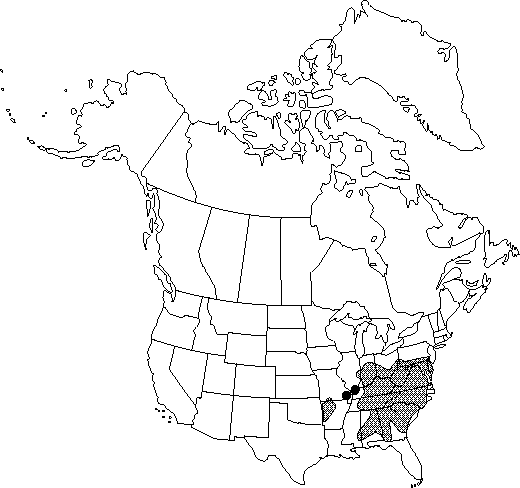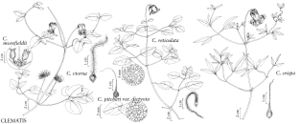Difference between revisions of "Clematis viorna"
Sp. Pl. 1: 543. 1753.
FNA>Volume Importer |
imported>Volume Importer |
||
| (One intermediate revision by the same user not shown) | |||
| Line 79: | Line 79: | ||
|publication year=1753 | |publication year=1753 | ||
|special status=Endemic;Illustrated | |special status=Endemic;Illustrated | ||
| − | |source xml=https:// | + | |source xml=https://bitbucket.org/aafc-mbb/fna-data-curation/src/2e0870ddd59836b60bcf96646a41e87ea5a5943a/coarse_grained_fna_xml/V3/V3_784.xml |
|genus=Clematis | |genus=Clematis | ||
|subgenus=Clematis subg. Viorna | |subgenus=Clematis subg. Viorna | ||
Latest revision as of 21:51, 5 November 2020
Stems viny, to 4 m, without cobwebby pubescence, nearly glabrous, or moderately pilose-pubescent proximal to nodes. Leaf blade mostly 1-pinnate, some simple; leaflets usually 4-8 plus additional tendril-like terminal leaflet, lanceolate to ovate, unlobed or 2-3-lobed, or most proximal 3-foliolate, 2-12 × 1-5(-6) cm, thin, not conspicuously reticulate; surfaces abaxially sparsely to densely pilose, not glaucous. Inflorescences axillary, 1-7-flowered; bracts well above base of peduncle/pedicel. Flowers broadly urn-shaped to bell-shaped; sepals pale lavender to reddish purple, grading to cream-yellow toward tip, ovate-lanceolate, 1.5-3 cm, margins not expanded, very thick, not crispate, tomentose, tips acuminate, recurved, abaxially sparsely to densely pubescent. Achenes: bodies silky-pubescent; beak 2.5-6 cm, plumose. 2n = 16.
Phenology: Flowering spring–summer.
Habitat: Wooded cliffs and stream banks
Elevation: 0-1400 m
Distribution

Ala., Ark., Del., D.C., Ga., Ill., Ind., Ky., Md., Miss., Mo., N.C., Ohio, Pa., S.C., Tenn., Va., W.Va.
Discussion
Formerly Clematis viorna was locally naturalized near Guelph, Ontario; no recent reports are known. D.S. Correll and M.C. Johnston (1970) mention "a report of a specimen" from Texas; neither the specimen nor further details have been located.
The Fox Indians prepared a drink from the roots of Clematis viorna to use medicinally as a panacea (D. E. Moerman 1986).
Selected References
None.
